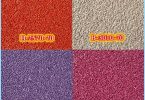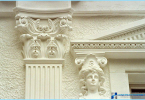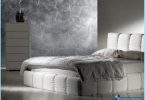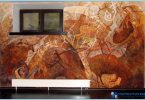Finishing of walls with plaster mixes of various kinds, whether it is on the basis of gypsum or cement is the most common way to finish walls.
Nowadays, when technology is not standing still, the plaster walls – this is the most widespread way of furnish of houses, which consists mainly of gypsum or cement base. What kind of plaster should I choose? Surely such a question was visited by the head of each, whose house is soon going «updated». During the finishing of houses, no matter be it internal or external walls, you need to choose the right version of the plaster that will last you quite a long time and will not fall off at the first opportunity.
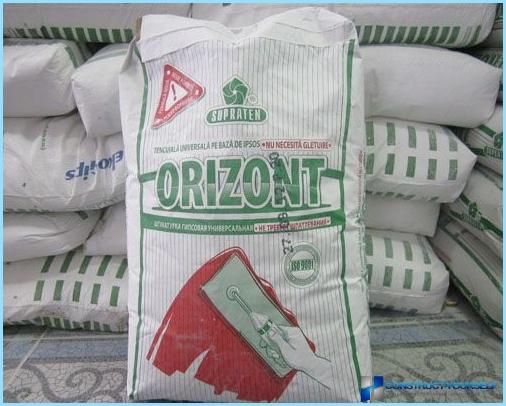
What kind of plaster is better? To date, the industrial market in the country, has a very large range of building mixtures of varied composition and quality, each designed for their own purposes. Most importantly, what you should guide the choice of plaster, to reach eventually the desired result, you should initially think rationally Stroy-budget, to deal with the brands suppliers, and the classification of mixtures, whether it is interior or exterior walls. Next, let’s talk about three basic areas of plastering and building solutions.
Sand-cement plaster ↑
This kind of plaster, abbreviated (TSPS) is a very popular species among the mixes from the builders. It boasts very democratic prices, and palpable potential during interior decoration. This mixture consists of fine Sandstone and thickeners — lime. Using CPS – you will be able to easily do the repair floor screed, and finally bring order to the disorderly put builders masonry.
Don’t underestimate the negative properties of the solution, because in the process of drying, it gives a certain shrinkage.
In case you need to make the layer thickness more than 50 mm, should make the application of such a thick ball of plaster in two stages. Otherwise you can go serious cracks after drying. As for the cons of the DSP, it should be noted its low strength — less durable (M100), the lack of moisture resistance and fragility. The main drawback, of course, is the low coefficient of plasticity compared to other plasters. Also Cpcom prohibited the plastering of a thin layer.
As life tricks, in order to increase the strength of the mixture can be added to the solution a certain quantity of cement, which will also increase the cost of the plaster. But to reduce the blend price, the solution can be diluted with clay.
Plaster gypsum ↑
For interior decoration, is a versatile and simple way for construction works. It consists of gypsum binders with the use of a certain number of placeholders. This kind of plaster is very easy to use. He has a high degree of plasticity, strength and the ability to quickly dry. Plaster mortar should be applied in layers. At one time a width of 30-50 mm (this figure depends on the quality of the mixture itself). Moisture resistance plaster medium. The downside in this case is only the cost, because it will be more expensive as TSPS and cement plaster. Advantages in working with this plaster will be a possibility of applying even minimal layers, which allows for maximum smoothness of the surfaces. «Gypsum» even sometimes you do not need putty.
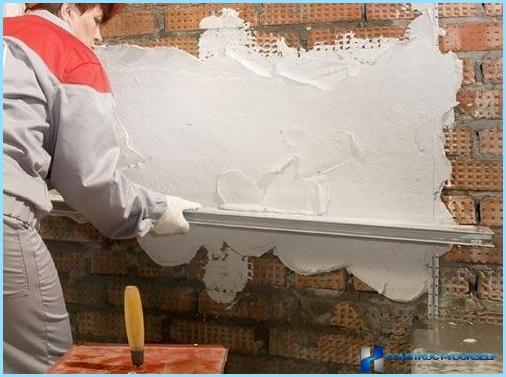
Where to apply gypsum plaster? ↑
Every professional Builder knows that this mixture, in any case can not be used in buildings and structures where increased humidity. If to apply it, it will certainly begin to swell and crumble. This option applies to premises where the humidity level exceeds 70%. Simply put, for bathrooms and kitchens it is simply impossible to use. But it would be unfair to the mix, not to mention that there are already water-resistant and gypsum mixture.
Summarizing all written above, we can conclude that this plaster, it is more rational to use to repair walls in the bedrooms and guest areas. In 90% of cases it is used to finish ceilings, as this mixture dries quickly.
The advantages of gypsum plasters
- In the present plaster pores, through them, in the case where if suddenly you accidentally flood, it will come out wet. After a couple of days after on the ceiling you won’t notice a trace of moisture.
- Gypsum mixture relevant in prefabricated houses, as this type is characterized by a high level of noise and heat insulation.
- Effectively evens out irregularities of the walls.
- Distinguished by excellent quality and versatility. That’s why it became very popular among artists.
Among the disadvantages are the following:
- Dries very quickly – have to use quickly, without kneading while large amounts.
- The high price – it all depends on the budget of each, but many complain about it.
- The inherent shrinkage after application.
- «Does not like to connect» with metal structures, so refrain from using it with this material.
Plaster cement-based ↑
This kind of mixture is intended for furnish of internal premises. They stand out for their durability, strength, plasticity, tremendoustomato and a high level of moisture resistance. Mortar plaster based on cement – widely used for decoration of places with high degree of humidity, and in areas where no heating.
The main ingredient of cement mixtures is Sandstone. Ready solution with the addition of medium-grained Sandstone in its composition, allows to apply the plaster layer more than 5 cm, but only if you will apply with it the reinforcing mesh. When you use fine-grained sand, the mixture can be used solely for the decoration of surfaces with a thin layer.
The application of plasters based on cement ↑
This kind of plasters rational use in residential areas and in bathrooms, kitchen, garage, exterior types of work. Over the last 25 years, environmentalists are very active in expressing their point of view and with the 90-ies prove the harm of this kind of decoration to health, it is worth to listen and not to use it in the bedrooms.
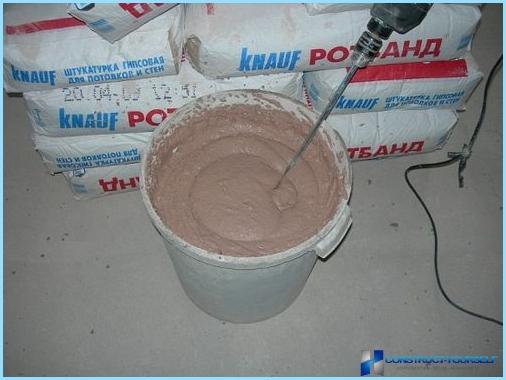
The advantages of this plaster:
- Low price.
- Widely available and unrestricted in the choice (its really to prepare at home with your own hands, to make an order for the factory or to purchase the mixture is dry).
- A wide range of applications, for both internal and external walls.
- Temperature resistance and waterproof.
- Long-time solidification of the mixture, which makes working with her a long time.
Disadvantages:
- Not stable in conjunction with the concrete.
- Heavy productivity work (even professional master is able to be busy with this for a long time to process at least a small area of wall).
- It is also not advisable to its uses in contact with the wood ceilings and walls.
- Low degree of environmental friendliness.
How to apply plaster ↑
Let us examine this in the example plaster, cement mixtures of the above, we now know that the best choice for rough preparation will be exactly those of the mixture. Due to the fact that this type has high durability, strength, and also due to possible applications in technically difficult processes requiring a constant resistance to moisture and to temperature changes.
What you must adhere to working with building mixes:
- The working room temperature must be in the range +5 – +30 ?With.
- Progruntovat surface before work will be an essential plus.
- Before applying the next layer must wait for complete drying of the surface.
- If you do not have experience in applying plaster, then you should start with a small section of the wall, with the application of makovye profiles.
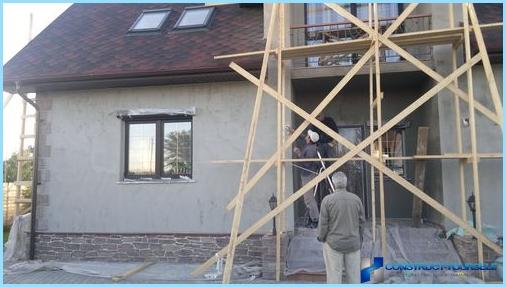
Don’t forget the main rule:
- Standing in front of the choice of plaster, you must clearly understand and consider all possible points (estimated layer thickness, humidity, etc.). It is very important not to forget that a mixture can be for both manual and machine applications.
- Use the documentation and advice from the manufacturer. They will be very useful in the process of mixing, should not exceed the production of the solution and remember, the surface must be completely cleaned from stains and dirt, in addition coated with acrylic or perhaps primers with the use of quartz sand.
- If you need to apply a thick layer of plaster, then it needs to be done in a few «approaches» with full drying of the previous layer before subsequent application of the resulting layer. Importantly, the first layer should be high in combination of the cement, to allow subsequent hard at it to gain a foothold.
Conclusion ↑
What plaster mix is best — cement-sand, plaster or cement still?
The answer to this question would be — each. As bad it may be any if it is prepared and used according to the rules and regulations. The indicator is also an expiration date. Do not buy a plaster for a month before it expires.
The decisive answer to the question, what plaster is best to say very difficult, because it is individual, because one main factor is the pricing policy and another with the quality and then like it or not, people with a small budget will never buy an expensive plaster, as it is to praise.
Despite this, plaster, gypsum-based are the most preferred among buyers wanting to upgrade the interior walls of the rooms. Cement choose to work on external objects. Importantly, if the starting point in time, your repair is already scheduled, and the choice of plaster you will never go wrong!


